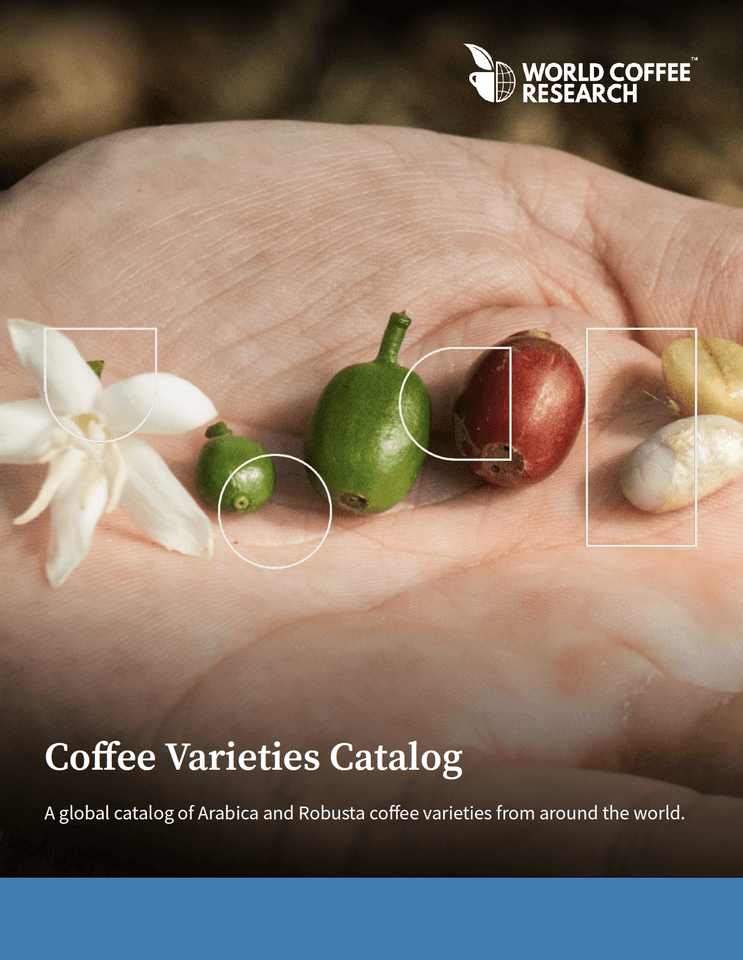
Arabica Coffee Varieties
This catalog—accessible via the web and a customizable PDF generator—gathers in one place for the first time essential information on 55 arabica varieties and 47 robusta varieties from around the world.
Information is power. There are dozens of widely cultivated Arabica and Robusta coffee varieties around the world, and each is unique in its performance and adaptation to local conditions. This catalog brings urgently needed information to coffee farmers to help them decide which coffee is best for their situation. Agronomic data — expected yield, nutrition requirements, optimal altitude, disease and pest resistance, etc .— about the widespread array of existing cultivated Arabica and Robusta coffee varieties has never been available in an open-access format before.
Because the life of a coffee tree is 20 – 30 years, the decision producers make about which variety to plant will have consequences until the next generation. If a farmer makes a poor decision on variety, the cumulative loss can be huge. Most coffee farmers — who earn their livelihoods based on the decisions they make about what kind of coffee to plant — don’t typically have access to transparent information about available varieties and how they differ. The lack of a comprehensive, up-to-date coffee catalog puts farmers at risk and perpetuates chronically low yields around the globe.
The purpose of the catalog is to lower the risk associated with coffee farming by providing direct information to farmers and other farm renovation or planting decision-makers to enable them to make an informed choice about what variety is best for their circumstances. Choosing the right type of coffee lowers the risk of disease and pest losses, has consequences for quality in the cup, and will be critical for coffee producers facing rapidly changing climates. Choosing the correct variety — one that meets the farmer’s goals and needs — can significantly reduce losses due to diseases/pests, increase production volume, and/or increase quality.
Throughout the coffee-producing world, there is a widespread need for replanting with young trees, trees resistant to major diseases and pests (including coffee berry disease, coffee leaf rust, antestia bug and stem borer), and with improved varieties capable of meeting the challenges of the climate crisis.
What people are saying
“World Coffee Research has knocked it out of the park with this one. Although aimed at farmers to help them make the best choice for planting, it’s a rich, detailed, free, and absolutely gorgeous resource for all.” — Matt Perger, Barista Hustle
“The result is a visually coherent and remarkably easy-to-use resource, the likes of which have not existed prior to now.” — Daily Coffee News
“It's like Alice down the Rabbit Hole.” — Taylor Street Baristas